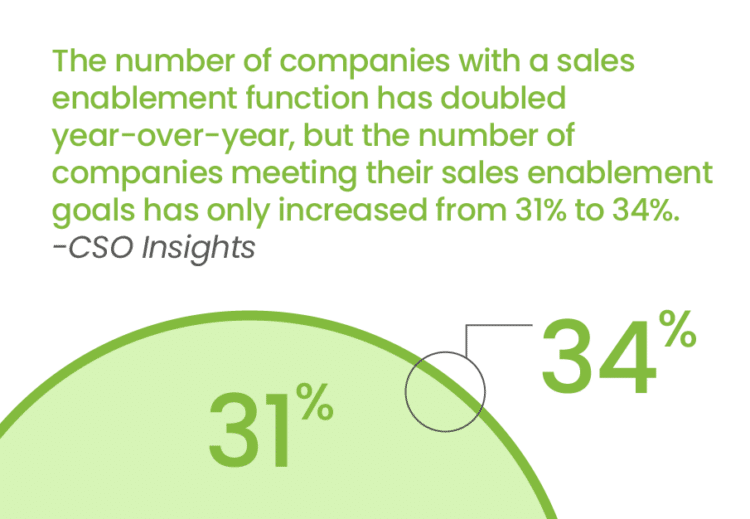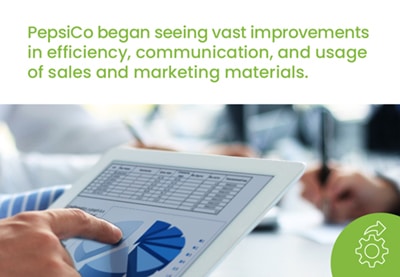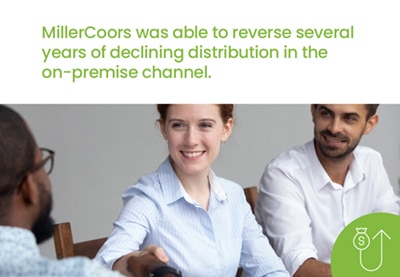
Sales Enablement vs. Content Management
I suspect a lot of the companies that fail to achieve the results they expect don’t really understand the depth of sales enablement. Let’s make one thing clear, sales enablement is not content management. Yes, content management is one piece of the sales enablement puzzle. But if you think centralizing your sales and marketing content in one place will solve all of your business challenges and drive growth for your organization, you are sorely mistaken.
When you set out to select and implement a sales enablement technology, you need to do so with a real understanding of what you’re trying to accomplish. Yes, content management is a necessary first step. It will help you drive sales efficiency, but it’s how you use your platform to drive sales effectiveness that really has the greatest impact on business outcomes. How do you look beyond basic content management to ensure the success of your sales enablement technology?
That depends on what you’re trying to accomplish. Here are three Fortune 500 brands leveraging their sales enablement solutions to push beyond basic content management and drive transformative change (and business results) for their organizations.
PepsiCo Uses Analytics to Uncover Content Gaps
Like most CPG companies, PepsiCo’s marketers need to make frequent updates to sales collateral and content in line with always-changing pricing and promotions. When it became difficult to push those changes out to their widely dispersed sales force and ensure sellers were always putting the latest information in front of customers, they deployed a sales enablement technology to easily aggregate, update, and distribute new assets to sales. But nothing changed.
Using their sales enablement platform’s reporting capabilities, they found 99% of their content was still not being utilized in the field six-months post-launch. In phase two, they used the data they compiled within their sales enablement technology to build a strategic content roadmap that would align sales and marketing for higher usage and adoption rates. And guess what happened?

MillerCoors Trades Its Static Sales Pitch For Interactive, Value-Based Selling Conversations
With more people opting to stay home, increased competition from wine and spirits, and establishments struggling to find the right assortment of taps amid a craft beer boom, MillerCoors recognized a need for change. Having attractive, accessible sales collateral was no longer enough. The company needed a way to help its sellers differentiate themselves and their beer brands from the competition.
To prove to bar, club and restaurant owners that beer (especially MillerCoors brands) was important to them making money, the MillerCoors team adopted a sales enablement solution that would empower them to distribute on-demand, complex, data-rich content in a simplified, easy-to-use format. Rather than relying on static PowerPoint decks and PDF brochures, the company paired relevant category insights and interactive selling tools like ROI calculators to elevate sales conversations. They also deployed a reporting system to track content usage by sales rep and use the information to inform future marketing campaigns and messaging.

Thermo Fisher Scientific Supports Greater Sales and Marketing Alignment with Sales Enablement
Thermo Fisher Scientific, a biotechnology company with a large and complex product catalog, had no shortage of valuable sales and marketing content. But the marketing team struggled with how to keep the content for such a large quantity of products up-to-date and efficiently distribute it to sales. Thermo Fisher Scientific implemented a sales enablement platform to help manage and distribute its high-volume, varied product content to the appropriate team members, resulting in more nimble and efficient sellers.

And just like PepsiCo and MillerCoors, Thermo Fisher has since expanded the use of its solution to other areas of the business, particularly product development – a telltale sign that their technology is helping them to accomplish what they set out to do, or maybe even what they never thought possible.
Considerations for Effective Sales Enablement
While all of these companies initially set out to better manage their content, they ended up driving significant change across internal processes, sales approach, and marketing strategy, leading to impressive results. Any sales enablement platform in the market today will inevitably help you to better manage content and increase sales and marketing efficiency. But why stop there? Using a sales enablement platform that empowers you to measure and optimize sales and marketing effectiveness for better buyer engagement can have a lasting impact on your bottom line.

- Content and Asset Management – Easily find, edit and share different types of content and assets and deliver cohesive, customer-centric presentations on any device
- Interactive Selling Tools – Give your sellers the tools they need to move from a static, feature-based sales pitch to prescriptive, value-based sales conversations
- Sales Readiness – Combine the power of sales enablement and learning management to continuously educate and inspire sellers to lead relevant and engaging sales interactions
- CRM Integration – Integrate with your CRM platform to seamlessly record and track content-based activities
- Analytics and Insights – Access in-depth analytics, reports, and dashboards to tie content back to revenue
- AI-Powered Platform – Leverage powerful AI and machine learning for autonomous content search, reporting and contextual recommendations
The stats I cited earlier are discouraging. But before you decide to completely table your sales enablement initiative because (sigh) it’s hopeless, get in touch. Mediafly can help you create your sales enablement requirements in the context of your unique business and drive the results you seek.

Comments are closed.